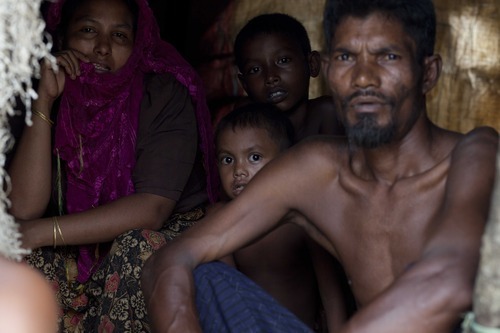December 03, 2012
 “Warning
signs” are in place for a genocide of Rohingya Muslims in Myanmar, an
Al Jazeera investigation has been told by a leading expert in the field.
“Warning
signs” are in place for a genocide of Rohingya Muslims in Myanmar, an
Al Jazeera investigation has been told by a leading expert in the field.
According
to Professor William Schabas, until recently President of the
International Association of Genocide Scholars, the findings of an Al
Jazeera documentary reveal that “we’re moving into a zone where the word
can be used”.
In June, Myanmar state media reported 78 deaths
during sectarian violence between Buddhist Rakhine and Muslim Rohingya
communities. The Al Jazeera team discovered that official statements
provided only a small part of what took place.
Instead, Rohingya
testify suffering systematic torture, ethnic cleansing and
execution-style killings. The program found evidence of at least two
mass graves and the deliberate murder of minors, some of whom were burnt
alive. The program includes eyewitness accounts of the extra-judicial
killings of more than 200 people during five days in June.
The
Hidden Genocide also provides compelling evidence that the killings were
at times carried out with the support and participation of the Myanmar
military, state security forces and local government officials.
Amongst the findings are:
- The location of a mass grave of 35 people, 25 of them children. Most had been shot as they fled by soldiers from Myanmar’s national army as well as paramilitaries from a border security force, known as NaSaKa.
- An eyewitness watched as around 100 bodies were dumped from a truck and buried in marshland by security services.
- Accounts describe security forces traveling through Rohingya districts throwing bottles of gasoline onto houses and setting them alight.
- One man described how up to 40 religious scholars were brought to the yard of a mosque and summarily executed. They were accused of being ‘troublemakers’.
- A 12-year old girl watched as 5 of her cousins - all younger than her - were picked up by security forces and thrown into large fires.
- There is evidence of torture and arbitrary arrest. One man who was severely beaten saw six corpses in the local police station.
- Al Jazeera spoke to one woman who was raped,according to medical records by more than 20 men
The
Hidden Genocide discovers a secret memorandum written in 1988 by
Rakhine nationalists. It sets out policies aimed at restricting the
ability of the Rohingya to travel freely, to prevent their access to
tertiary education and for controlling their birth rate. There are today
obstacles to prevent marriage within the ethnic group, including the
requirement of a large payment to allow a legal marriage or be
threatened with five years’ imprisonment.
The election in 2010 of
the Rakhine Nationalities Development Party (RNDP) has placed in the
state government a leadership that denies the existence of the Rohingya
as an ethnic group. The party leader, Dr Aye Maung, has repeatedly said
that the people who call themselves Rohingya should be deported from the
land of their birth to third countries.
Dr Aye Chan, a Rakhine
historian based in Japan has returned for the first time to Myanmar
since 1988 and is at the forefront of a body of quasi-academic material
that denies the existence of the Rohingya race, claiming they are ‘a
fabricated people’.
According to Prof. Schabas, one of the foremost experts on international criminal law, “We’re
moving into a zone where the word can be used (in the case of the
Rohingya). When you see measures preventing births, trying to deny the
identity of the people, hoping to see that they really are eventually,
that they no longer exist, denying their history, denying the legitimacy
of the right to live where they live, these are all warning signs that
mean that it’s not frivolous to envisage the use of the term genocide.”
The
findings are the result of a four-month investigation into events in
western Myanmar this June 2012. It is produced by British filmmaker Phil
Rees and will be broadcast at the following times:
Source: Here
No comments:
Post a Comment